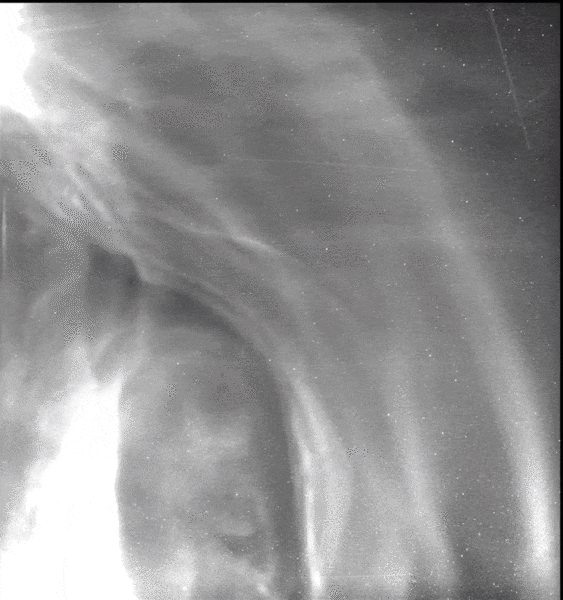Create a free profile to get unlimited access to exclusive videos, sweepstakes, and more!
Watch NASA’s Parker Solar Probe Fly Through a Coronal Mass Ejection
It took a solar punch and kept on cruising.
In the end of the world disaster flick Solar Attack (streaming now on Peacock), world scientists are faced with an apocalyptic scenario when a powerful coronal mass ejection (CME) threatens to ignite methane in the atmosphere and light the sky on fire.
Fortunately, real world levels of atmospheric methane aren’t quite that high (though we have other climatological problems) and we’re not at risk of burning alive in a planet-sized air fryer. However, a better understanding of solar weather, solar flares, CMEs, and the ways they interact with the surrounding space, are an important part of modern astronomy.
NASA’s PSP Sees the Power of a CME from the Inside
NASA’s Parker Solar Probe (PSP) is leading the charge for humanity’s solar studies by flying right into the fire to see how things work up close. For the last few years, the probe has been circling the Sun in a tightening orbit, using close passes with Venus for gravity assists to sling it ever-closer. Along the way, it’s grabbing samples, making measurements, and snapping images.
RELATED: Aurora Alert! Strong CME Lights Up the Night Sky
On September 5, 2022, the PSP flew through one of the most powerful CMEs on record, according to NASA. Parker’s journey through a CME at more than 400,000 miles per hour appears to have confirmed a 20-year-old prediction about CME interactions, based on a study published in The Astrophysical Journal.
BR Ragot and SW Kahler’s 2003 paper hypothesized that CMEs might get weird with interplanetary dust hanging out in orbit around the Sun, pushing it farther out into the solar system. It made a sort of intuitive sense and the numbers worked, but it was difficult to confirm from 93 million miles away. The Parker Solar Probe, however, doesn’t have that problem and could observe the interaction of a powerful CME up close and personal.
“These interactions between CMEs and dust were theorized two decades ago, but had not been observed until Parker Solar Probe viewed a CME act like a vacuum cleaner, clearing the dust out of its path,” said the study’s lead author Guillermo Stenborg, in a statement.
RELATED: Incredible Satellite Image of Aurora Over Canada with City Lights… And Something Else
To quantify the effect of the CME on the interplanetary dust, astronomers measured the background light picked up in images. That’s because interplanetary dust reflects light and casts a faint glow wherever it is present. If the CME cleared out some of the dust, then the probe’s onboard cameras should have picked up a corresponding dip in brightness, and that’s exactly what they found.
Parker’s successful flight through a large CME is already a huge technical achievement (and massively cool), but the data Parker is sending back will inform scientific research for decades. In the meantime, as the Sun approaches solar maximum, the Parker Solar Probe will continue its mission to study the Sun’s activity.
The poor saps in Solar Attack only wished they had a Parker Solar Probe. Watch it now, streaming on Peacock!































